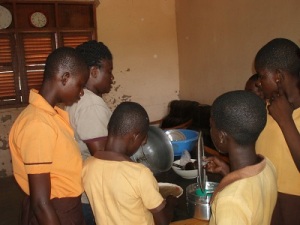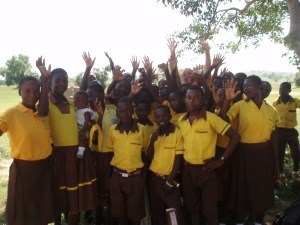Zanlerigu Primary School
Ghanaian national food: TZ with vegetable soup
In Africa, especially Ghanaians consume varieties of food. One of the most cherished food consumed in the northern part of Ghana is “tuo zaafi” (TZ).
T.Z can be prepared using maize or millet. This millet is sub-divided into two: early millet called “nara” and guinea corn called “kemolega”.
After harvest this harvested millet is dried for 3-4 days and when well dried, you thrash or pound them and afterwards remove all the chaffs from the grains.
Also, the grains are ground using the grinding stone or grinding mill. This ground grains are called flour. This flour will be mixed with water. The water should stay for a day so that fermentation will take place. With your entire cooking utensils ready e.g. stirring rod, pot etc pour the fermented mixture inside the pot on fire and stir till it is uniformly mixed to form porridge. When this porridge is well boiled add flour and start stirring and adding the flour for 2-3 minutes and that makes what is called T.Z.
T.Z can be taken with a lot of soup depending on the kind of soup one prefers: groundnut paste and okro soup (vegetable soup) is what we intend eating with our T.Z.
With your groundnut paste, okro and other ingredients ready, you cut your okro into pieces set your fire and if the water starts boiling, pour your okro inside the pot.
If it starts to boil or boiling add salt bitter into it. In Ghana salt is very important in preparation of any meal, so you add salt and any other ingredients that are made available to you. You can even add meat if you have.
After all this you then serve your bowls and that makes a complete meal for consumption.
Bon appetit!





Spend the next 10 minutes with us to see the video and find out how our most common dish is made.
Read all the posts by Zanlerigu Primary School
Read all the post by students from Ghana.

















